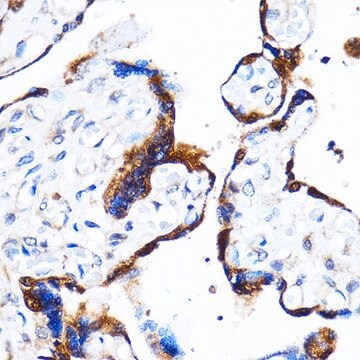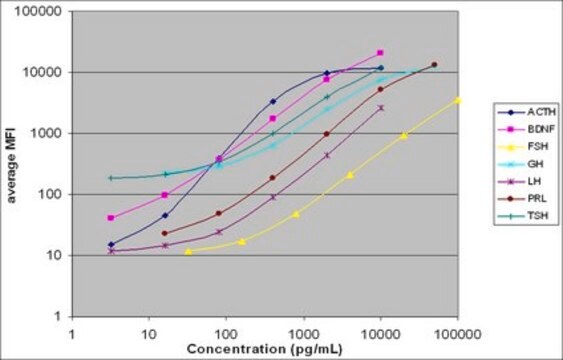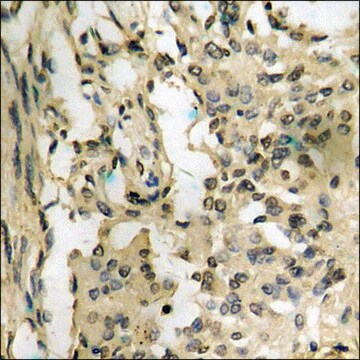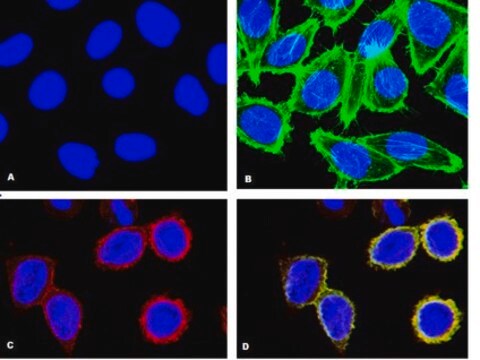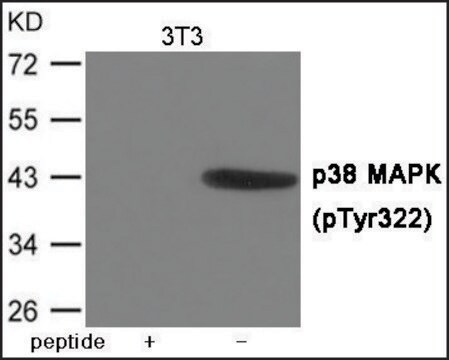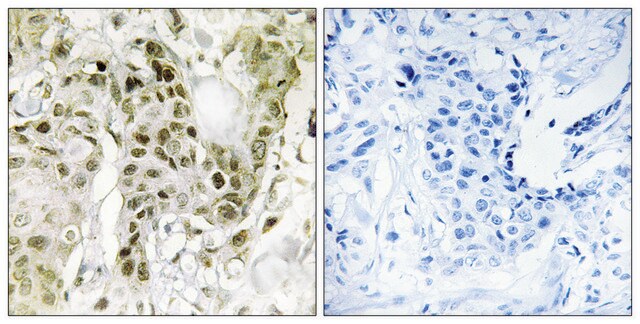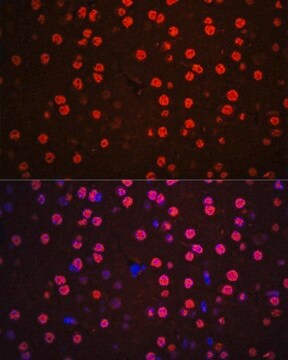MABS64
Anti-phospho-p38 (Thr180/Tyr182) Antibody, clone 6E5.2
clone 6E5.2, from mouse
Sinônimo(s):
mitogen-activated protein kinase 14, cytokine suppressive anti-inflammatory drug binding protein, stress-activated protein kinase 2A, Cytokine suppressive anti-inflammatory drug-binding protein, CSAID-binding protein, MAP kinase MXI2, MAX-interacting pro
About This Item
Produtos recomendados
fonte biológica
mouse
Nível de qualidade
forma do anticorpo
purified immunoglobulin
tipo de produto de anticorpo
primary antibodies
clone
6E5.2, monoclonal
reatividade de espécies
human, mouse
técnica(s)
immunocytochemistry: suitable
western blot: suitable
nº de adesão NCBI
nº de adesão UniProt
Condições de expedição
wet ice
modificação pós-traducional do alvo
phosphorylation (pThr180/pTyr182)
Informações sobre genes
human ... MAPK14(1432)
Descrição geral
Especificidade
Imunogênio
Aplicação
Signaling
MAP Kinases
Qualidade
Western Blot Analysis: 0.5 µg/mL of this antibody detected p38 on 10 µg of Anisomycin treated and untreated HeLa cell lysate.
Descrição-alvo
forma física
Armazenamento e estabilidade
Nota de análise
Anisomycin treated and untreated HeLa cell lysate
Outras notas
Exoneração de responsabilidade
Não está encontrando o produto certo?
Experimente o nosso Ferramenta de seleção de produtos.
Código de classe de armazenamento
12 - Non Combustible Liquids
Classe de risco de água (WGK)
WGK 1
Ponto de fulgor (°F)
Not applicable
Ponto de fulgor (°C)
Not applicable
Certificados de análise (COA)
Busque Certificados de análise (COA) digitando o Número do Lote do produto. Os números de lote e remessa podem ser encontrados no rótulo de um produto após a palavra “Lot” ou “Batch”.
Já possui este produto?
Encontre a documentação dos produtos que você adquiriu recentemente na biblioteca de documentos.
Nossa equipe de cientistas tem experiência em todas as áreas de pesquisa, incluindo Life Sciences, ciência de materiais, síntese química, cromatografia, química analítica e muitas outras.
Entre em contato com a assistência técnica